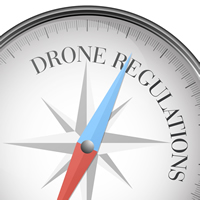
Hobby Drone Operators Can’t Call the Tower….
Due to changes in the law mandated by the 2018 FAA Reauthorization Act, all hobbyist or recreational Unmanned Aircraft Systems (UAS) operators are required to have authorization from Air Traffic to fly in controlled airspace. This new law puts restrictions in place that limit all recreational operations to less than 400 feet in uncontrolled airspace and requires approval for any operation in controlled airspace. This memo and attached pre-duty brief serves as interim guidance for the implementation of this new law.
Previously, recreational flyers could communicate with the lower or controlling facility and notify of “intent to fly.” The language in the previous law was vague and did not allow for or require, an intervention or approval from air traffic controllers. This new law will remove local air traffic controller involvement with recreational UAS operators and reduce distractions and phone calls while improving the safety of the National Airspace System (NAS).
Air Traffic Facilities should not authorize or approve any recreational flight.
The purpose of this implementation plan is to diminish the need for calls to the towers from any recreational operator requesting to fly in controlled airspace. The authorization and restrictions for recreational UAS operators will be a National Authorization for fixed sites in controlled airspace.
Source: SUASnews

(One curious thing, though. Check the next to the last line: “Map’s”. The plural of Map is “maps”, not “map’s”.)
Now from the AMA perspective: FAA Memorandum for Air Traffic Control Education
Recently an FAA Memorandum that addressed altitude and flying restrictions in controlled airspace was circulated around the internet. This memorandum was intended as FAA guidance to educate air traffic control facilities (ATC) on best methods to respond to recreational flyers seeking authorization, not as guidance to recreational operators.
Recent legislation under Section 349 (c) states operators in controlled airspace will be required to seek authorization from towered airports, unless flying from a charted flying site. We successfully championed that if you are flying at an AMA flying field or sanctioned event, you can continue flying by following AMA’s safety program and within the existing agreements your club or contest director has with nearby airports.
AMA has been in contact with the FAA regarding this memorandum, and we have been assured that our flying sites’ current agreements with air traffic control facilities (ATC) will be honored and our members can continue flying within AMA’s safety program, as usual. This memorandum was not intended for public distribution, and out of context can read as problematic or contradictory to previous messaging to protect our operations. The FAA clarified this memorandum is just one of many steps in the Section 349 implementation process.
Future steps in the implementation process will include the need for letters of agreements (LOA) between AMA flying sites in controlled airspace and nearby ATC. Updates and guidance on how clubs should proceed with LOAs will be provided to our members in the coming days. Please monitor social media and www.modelaircraft.org/amagov for the latest information. You can reach our offices at 765-287-1256 or amagov@modelaircraft.org.
Source: AMA blog
